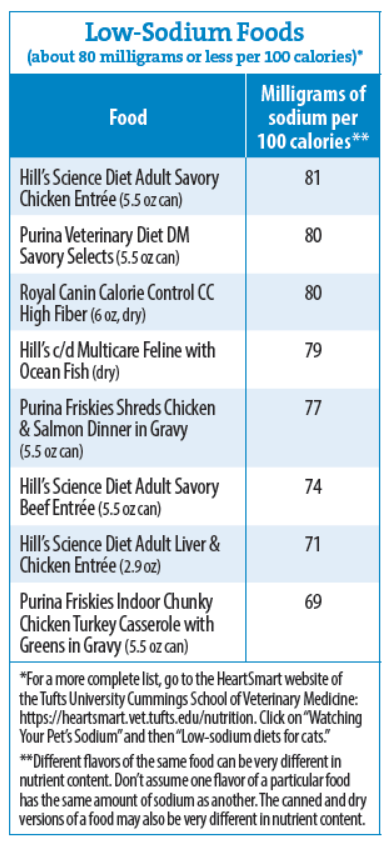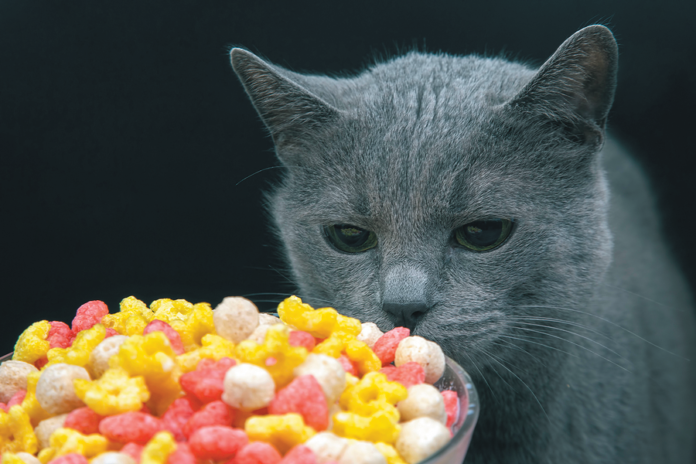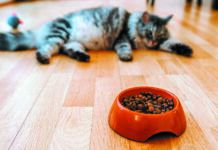One in 10 cats develops heart disease, according to the American Veterinary Medical Association. It’s not a small number.
The most common kind of heart disease that afflicts our feline pets is called cardiomyopathy. This often leads to congestive heart failure. The heart gradually loses its ability to pump blood properly, and the situation eventually becomes severe enough to cause fluid buildup — most often in or around the lungs. That in turn makes it more difficult to breathe. Life-threatening blood clots can develop, too.
Medications for controlling heart disease progression have really improved for cats over the years, but diet is an important aspect of treatment as well. This is where sodium restriction comes in. Sodium, a component of table salt, draws water, and the last thing a cat with fluid buildup needs is an accumulation of more fluid still. That’s why a reduced-sodium diet is often recommended. This is true even for cats with heart disease who have not yet progressed to heart failure.
It can be hard to tell which foods are high in sodium and which are not. Herein, some help.
The main diet
Unlike nutrition facts labels on food for people, the nutrition information on cat food does not have to list the number of milligrams of sodium per serving. The veterinarian managing your cat’s heart disease should definitely be advising you on what food to feed, but here is a partial list of low-sodium cat foods we have compiled. Some are available only from your veterinarian. Note that companies frequently change their formulations, so it’s important to back up these numbers by contacting the manufacturer’s Customer Service department. They should be perfectly willing to share the information. An unwillingness to share nutrition facts is a red flag about the company’s practices.
Treats and taste enhancers
Everyone, including every cat, needs treats rather than just the main-meal food. A few low-sodium treats (as we went to press): Fancy Feast Duos Natural Rotisserie Chicken Cat Treat, Fancy Feast Duos Tuna with Accents of Parsley Cat Treat, and Royal Canin Original Feline Treat.
Cats with more advanced heart disease like congestive heart failure may also need flavor enhancers on their regular food to whet their appetite. Weight loss and lack of nutrition from undereating only makes the illness harder to manage. A couple of low-sodium taste enhancers worth trying:
Homemade chicken, beef, or fish broth (even low-sodium store-bought broths are too high in sodium or contain onions or garlic, which are toxic to cats).
Cooked lean meats, including, chicken, turkey, beef, or fish. Not deli/sandwich meats or cold cuts, rotisserie chicken, or any canned fish or meat. Also avoid poultry products that say “enhanced,” “marinated,” or “solution” on the label. That usually means salt has been added.
Going lower on sodium requires some rethinking but is totally doable. Working with your vet, you should be able to get your cat to the right sodium level for her condition.
It might seem like you can tell whether a cat food is low in sodium by looking at the ingredient list. If sodium is not listed or listed far down on the list, it’s easy to assume the product is a low-sodium item. But sodium can occur naturally in foods such as meat, fish (particularly shellfish), dairy products, and eggs. So even cat foods that don’t list sodium (or salt) may be too high in that ingredient to fit comfortably into a low-sodium diet.





What would be great is if companies would also make their novel protein diets with less sodium. I have a cat with CHM who also has IBD. It’s been really difficult to find a food that is low sodium, has a novel protein, and one he likes. Why all pet food companies don’t make their food with lower sodium is also beyond me (there are some who should be ashamed on the amount of sodium in their products). I appreciate Tufts for putting together a list of appropriate foods. The pet food industry can and should do better.
I completely agree with you……. For years, I always use to use IAMS CAT FOOD, as well as Eukanuba Dry/Wet. Part of the issue is the majority of these companies, know nothing about cats or dogs. As I said, used IAMS PRODUCTS FOR YEARS…..Then, the company went to shit/crap….In the 90’s IAMS was bought by Proctor and Gamble…….. a company who makes soaps, detergents and even more cleaning/waxes!! We wouldn’t buy spaghetti from a cat food company……. So, why are we buying food for cats/dogs from a company that has no experience in making high quality food…..I couldn’t understand why my cats were being so picky with their food!! Then , I spoke with my new vet that my cats love and told me about Purina ProPlan brands ……. I was hesitant but I gradually switched them to Purina ProPlan and I havent looked back….the majority of these companies just care about the all mighty dollar!!! While they make the food, they don’t care about the quality…….and that is so sad.. There’s no regulations or a type of guidelines that they must follow..Our pets are our family members…We should start to demand quality for our family members !!
Purina is owned by the multinational Nestle! Just as bad as Proctor and Gamble!
In the chart above it states that low sodium foods should be below 80mg/100 calories but on the low-sodium-diet-lists-cat-april-2022.pdf, the unit used is mg/100kcal. Which is the correct unit?
I have the same question as CG. The above chart says that low sodium foods should be below 80mg/100 calories—but in your low-sodium-diet-lists-cat-mar-2023.pdf, more than half of these are OVER 80 mg. And 12 of those listed are 90mg or more.
Good post